The Nasrid garden was inspired by the Muslim conception of Paradise, a fertile place which provided pleasure to the five senses: color, light and shadow for sight; pertumed flowers and shrubs for smell; sweet fruits for taste, the symphony of water for hearing; and the texture of its materials – wet or dry, smooth or rough – For touch.
This was what the gardens of the past were like, a representation of the Garden of Eden. As they do today, they descended in terraces as far as the towers and crenellated walls and raised paths ran through the crops above the trees and bushes, putting the fruits within reach.
When the Franciscans arrived, the Nasrid gardens became the largest in the Alhambra. There were divided into six terraces and thanks to the abundant water, provided a generous harvest of truits, legumes and vegetables.
Since the monastery has been a Parador, this space has been used as a small botanical museum, with trees and bushes from all over the world. The earth on its reddish paths, the color of the Alhambra, is known as alpañata, a mixture of sand and dirt from Granada which is more intense than the typical soil of western Andalusia. The paths skirt boxwood hedges, different from those decorating the front gardens, which are fragrant myrtle with its pointed leaves. In the window boxes of the enclosed balcony, there is a collection of aromatic plants used to scent the delicacies served in the dining rooms of the Monastery of San Francisco.
The sum total of our day was spent in the gardens, slowly moving around, smelling fragrances, and at one point, while sitting on a bench, listening to The Byrds sing, “Turn! Turn! Turn!
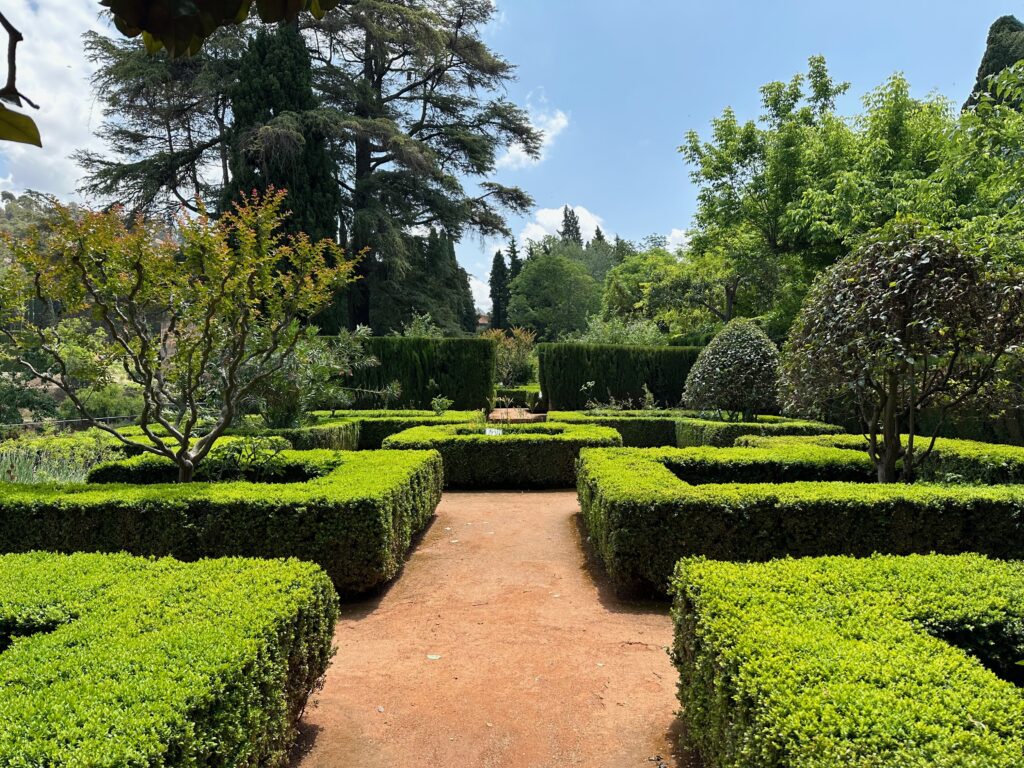
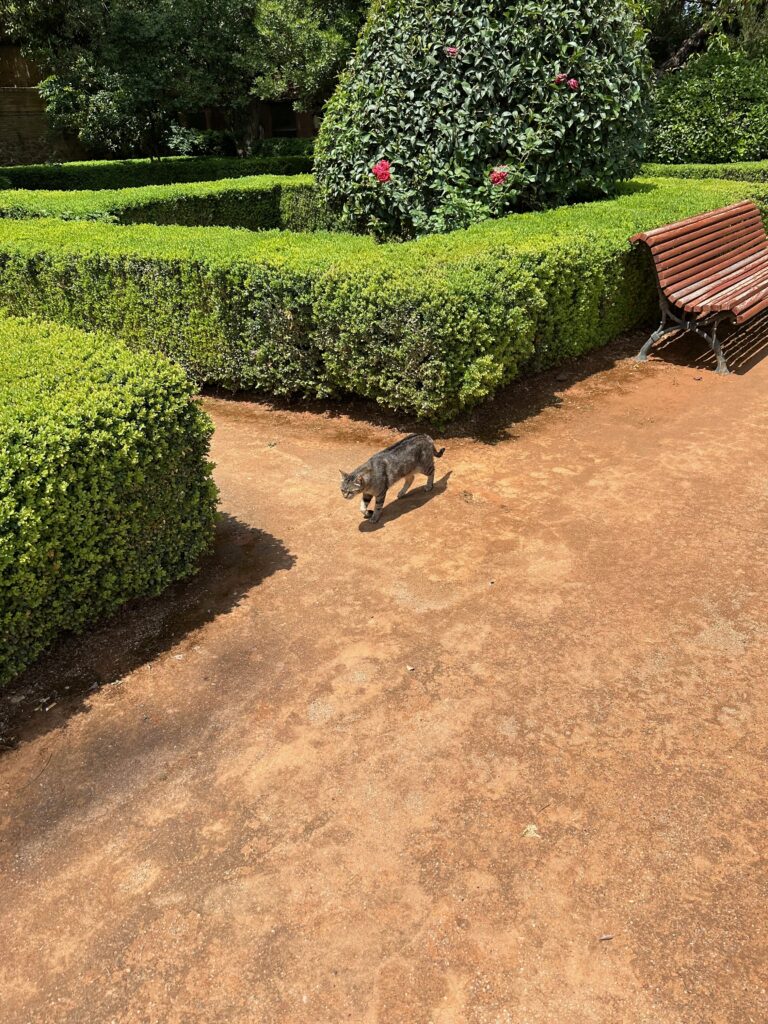
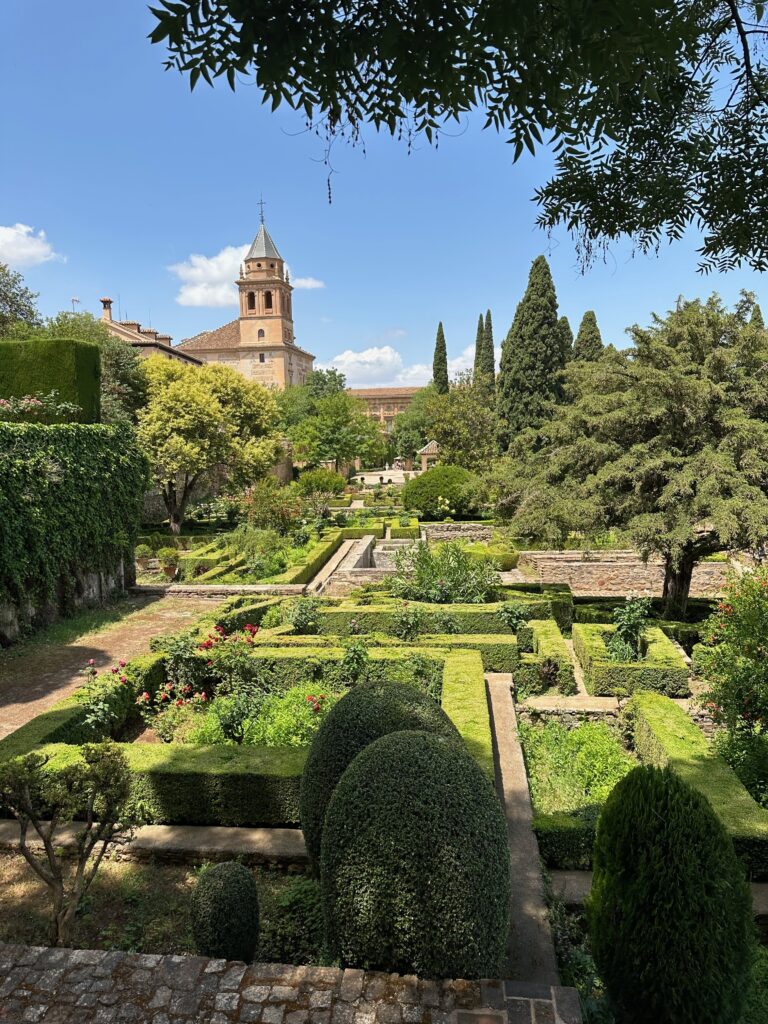
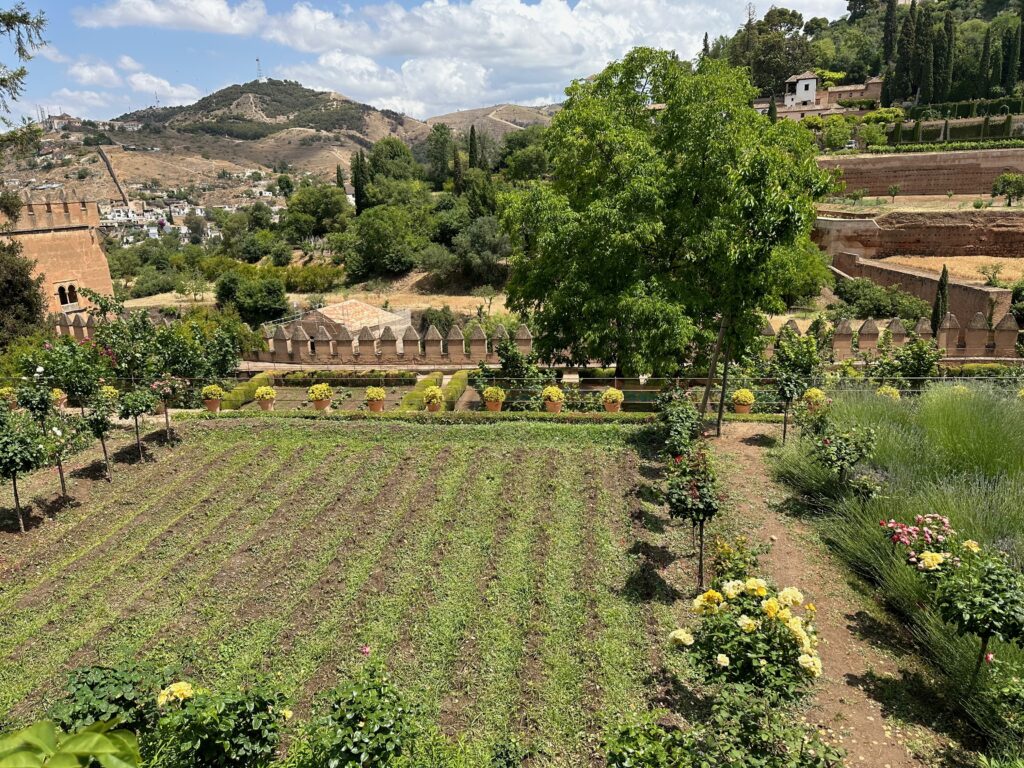
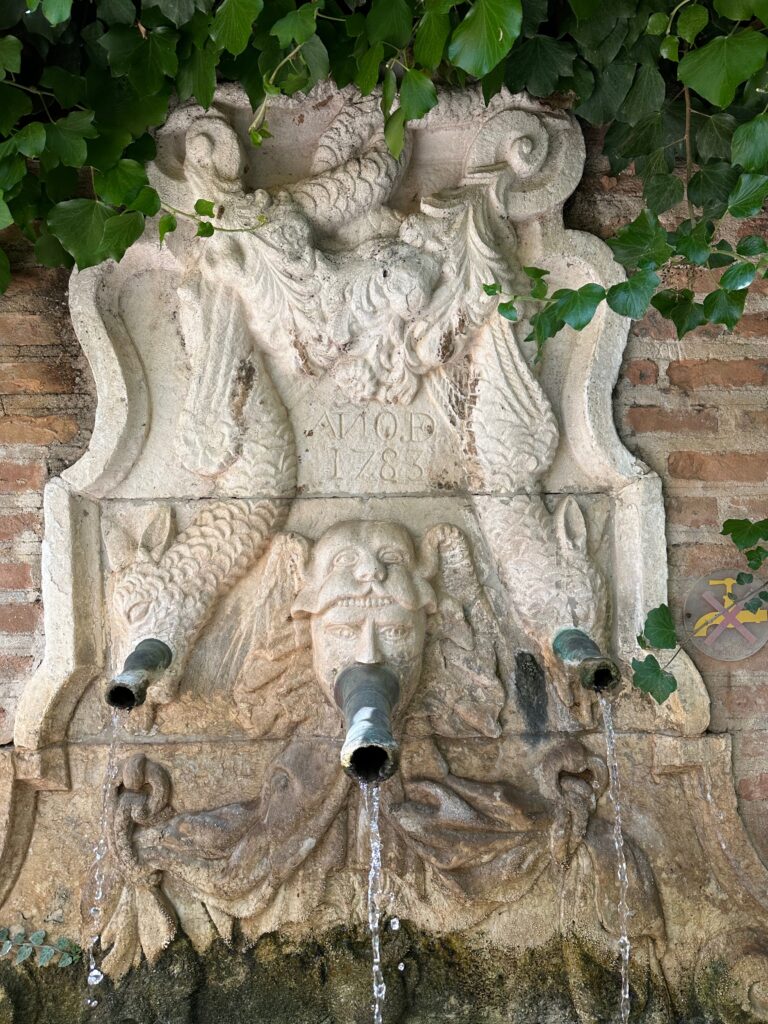
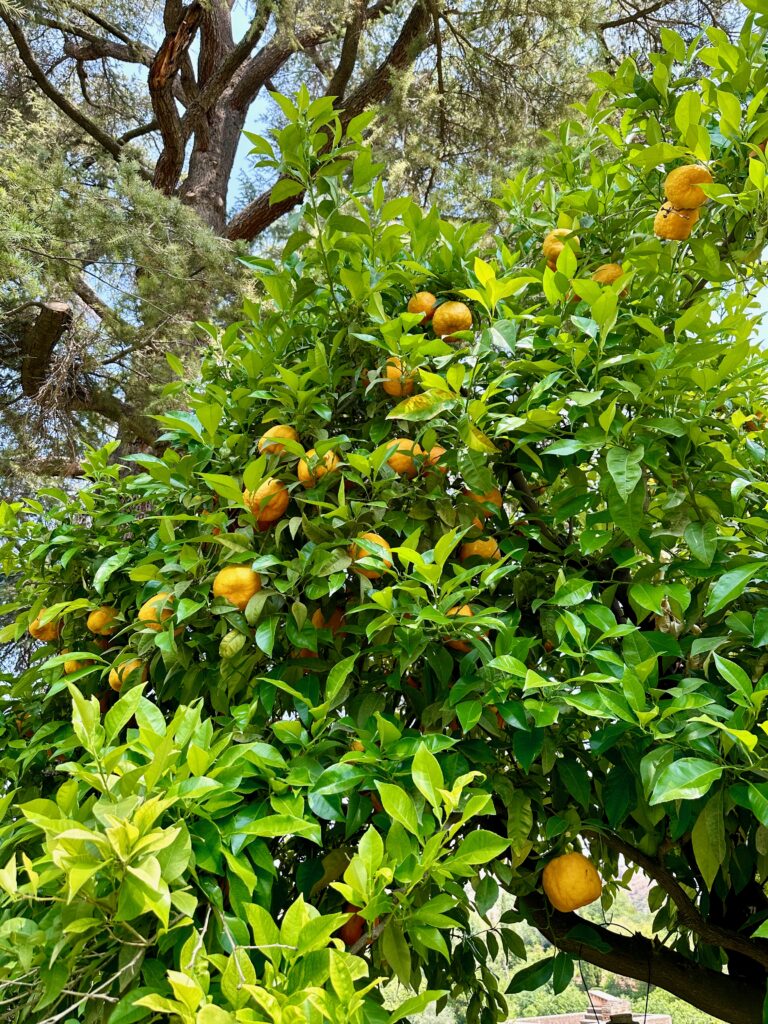
Thyme
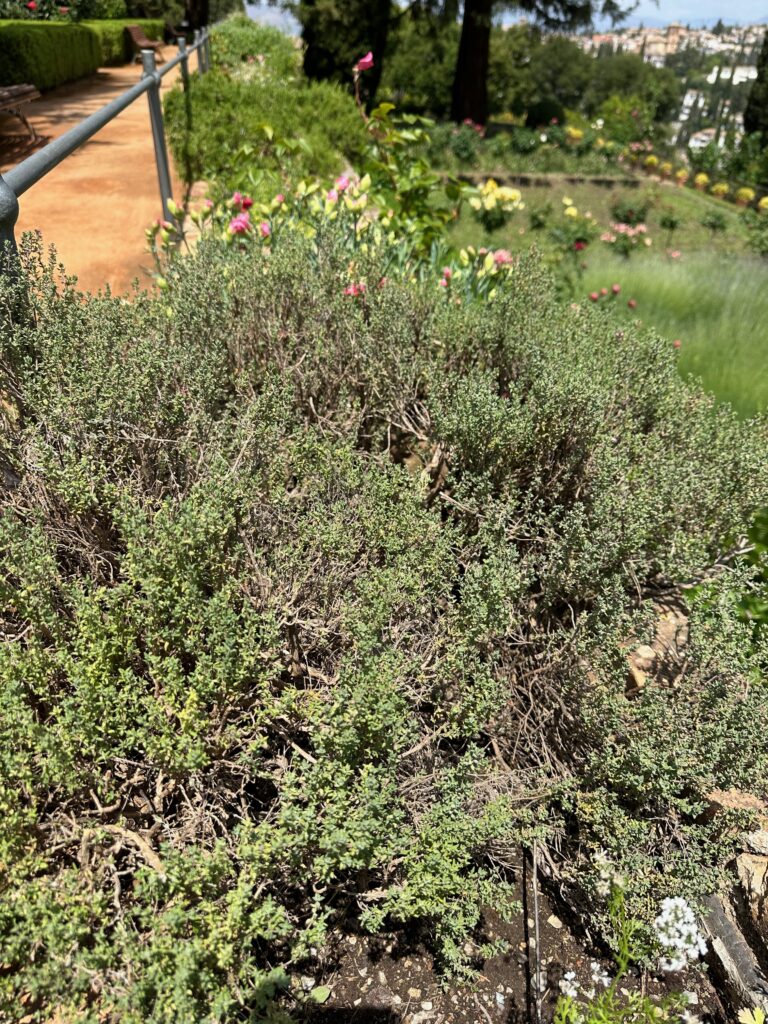
Rosemary
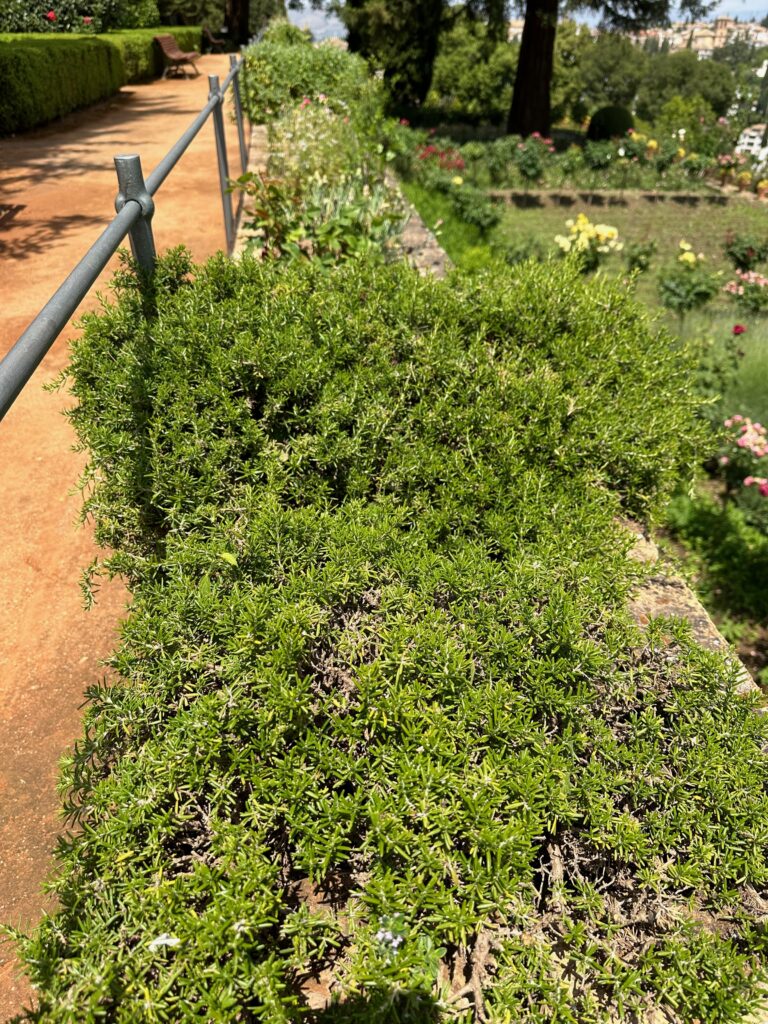
Sage
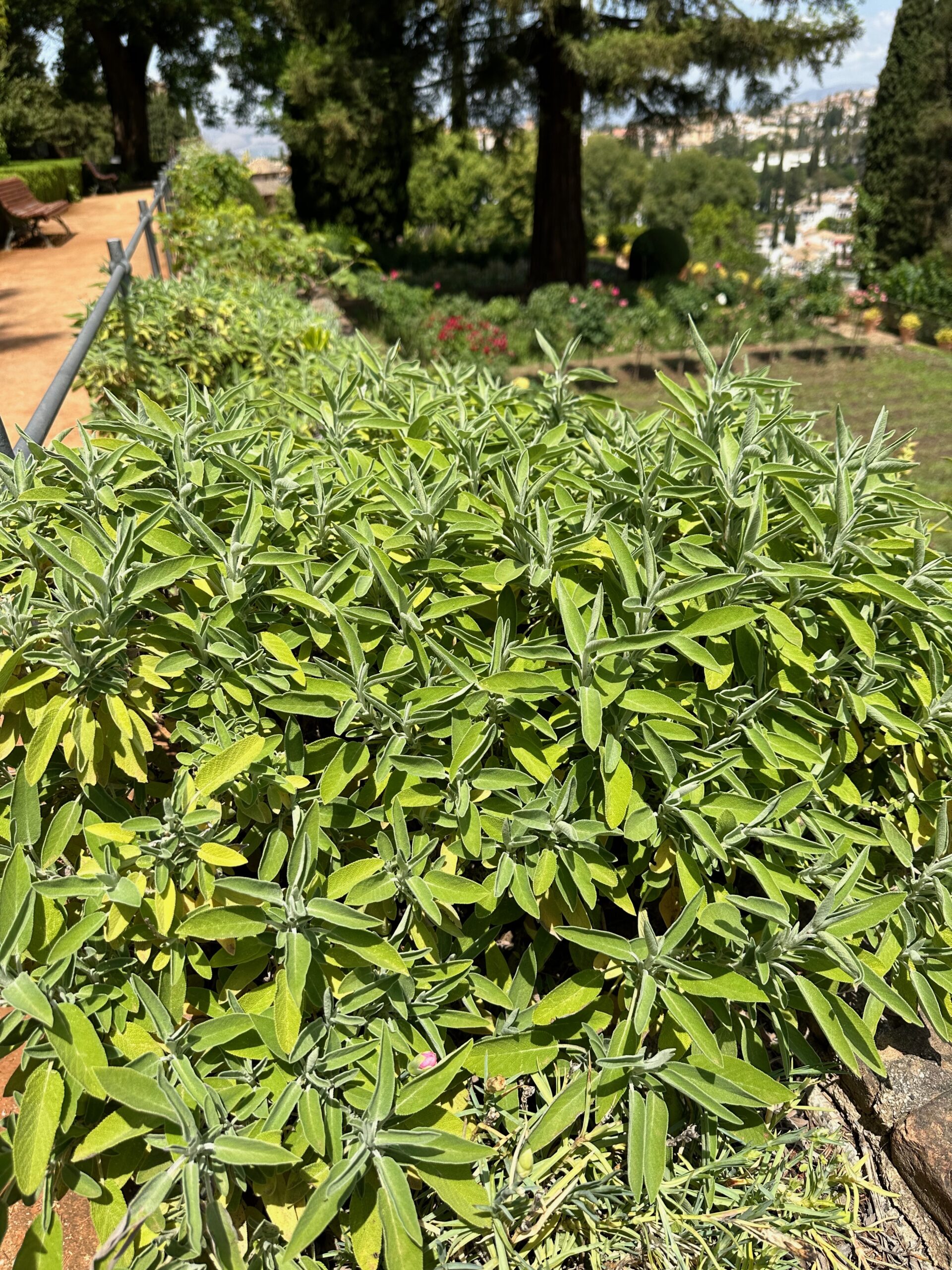
After dinner we had the privilege to walk the grounds after closing and experience the place essentially by ourselves, just as the sun was setting.
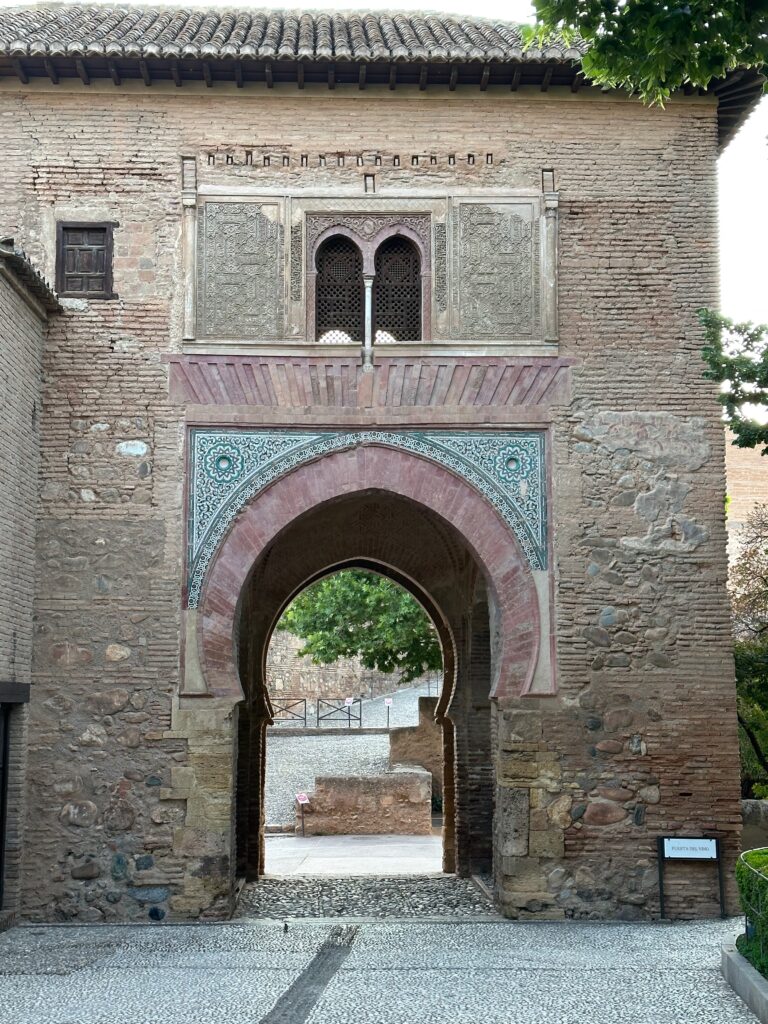
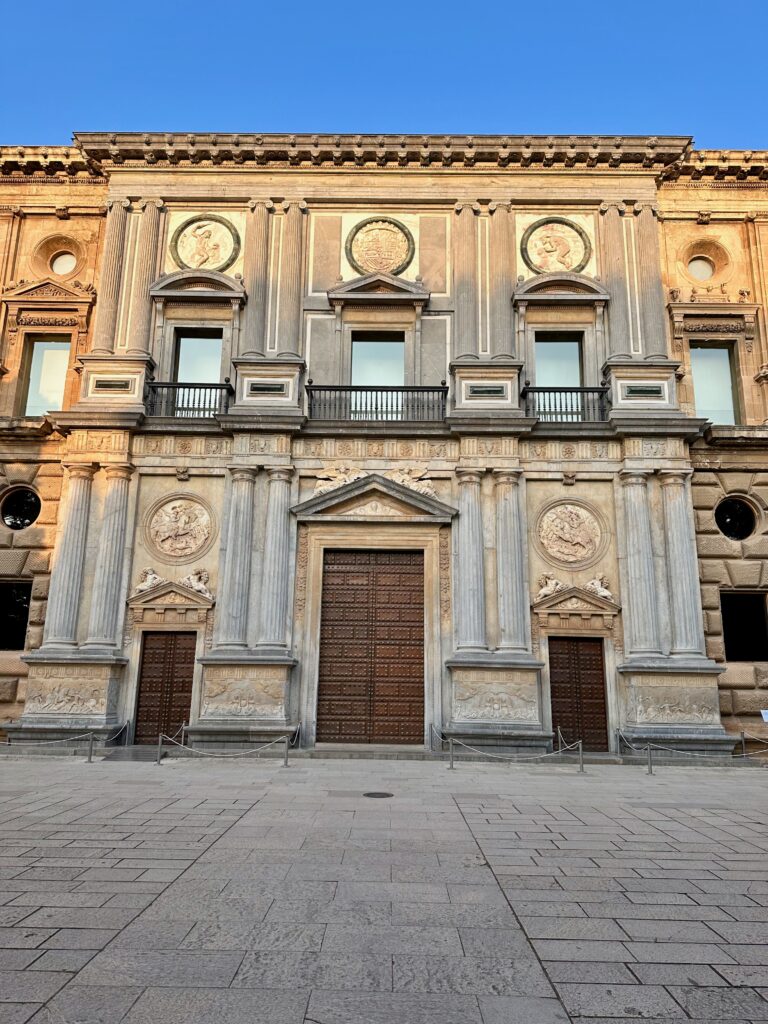
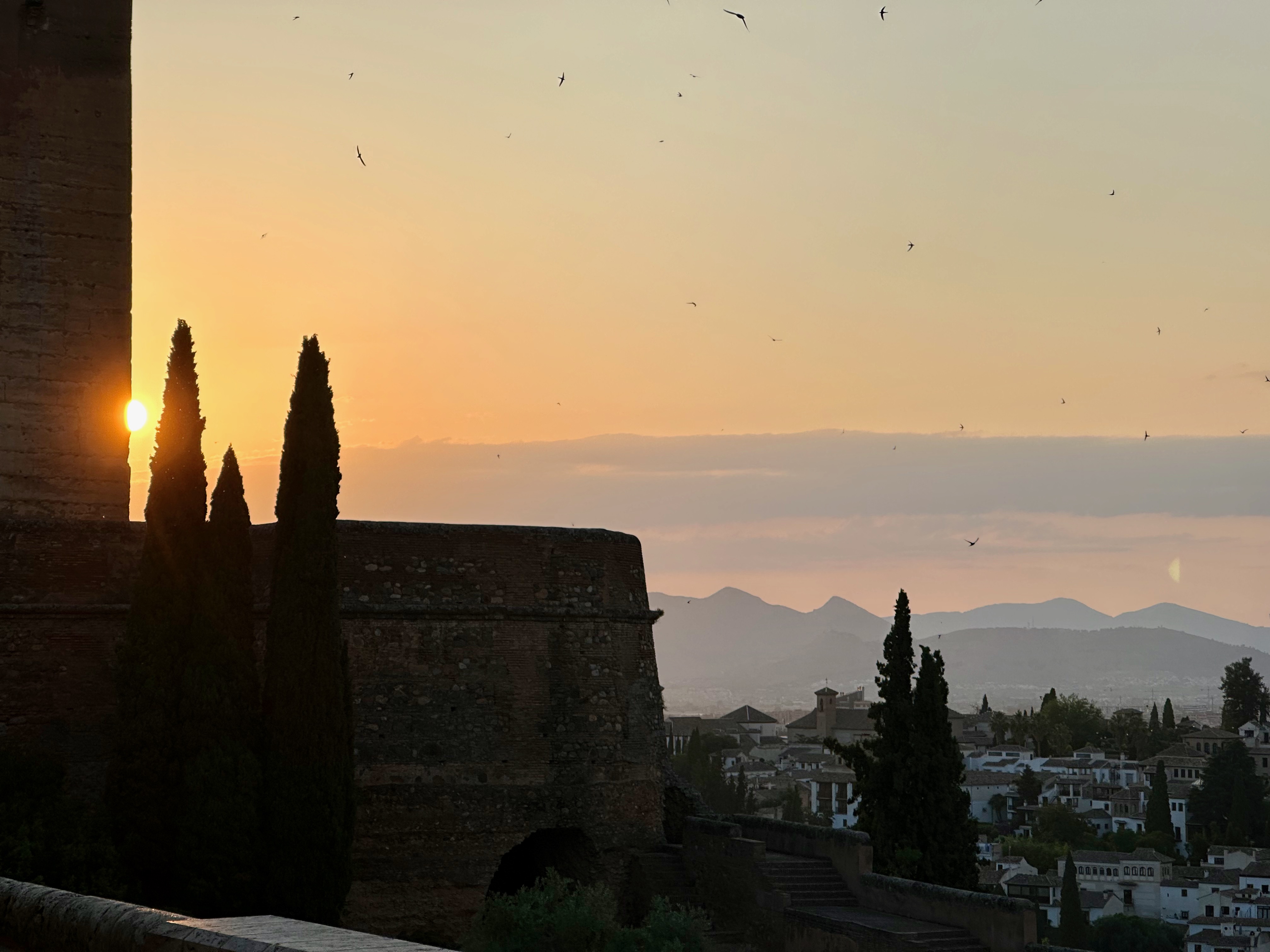
A time to every purpose under heaven…
Sublime day, friends. xx